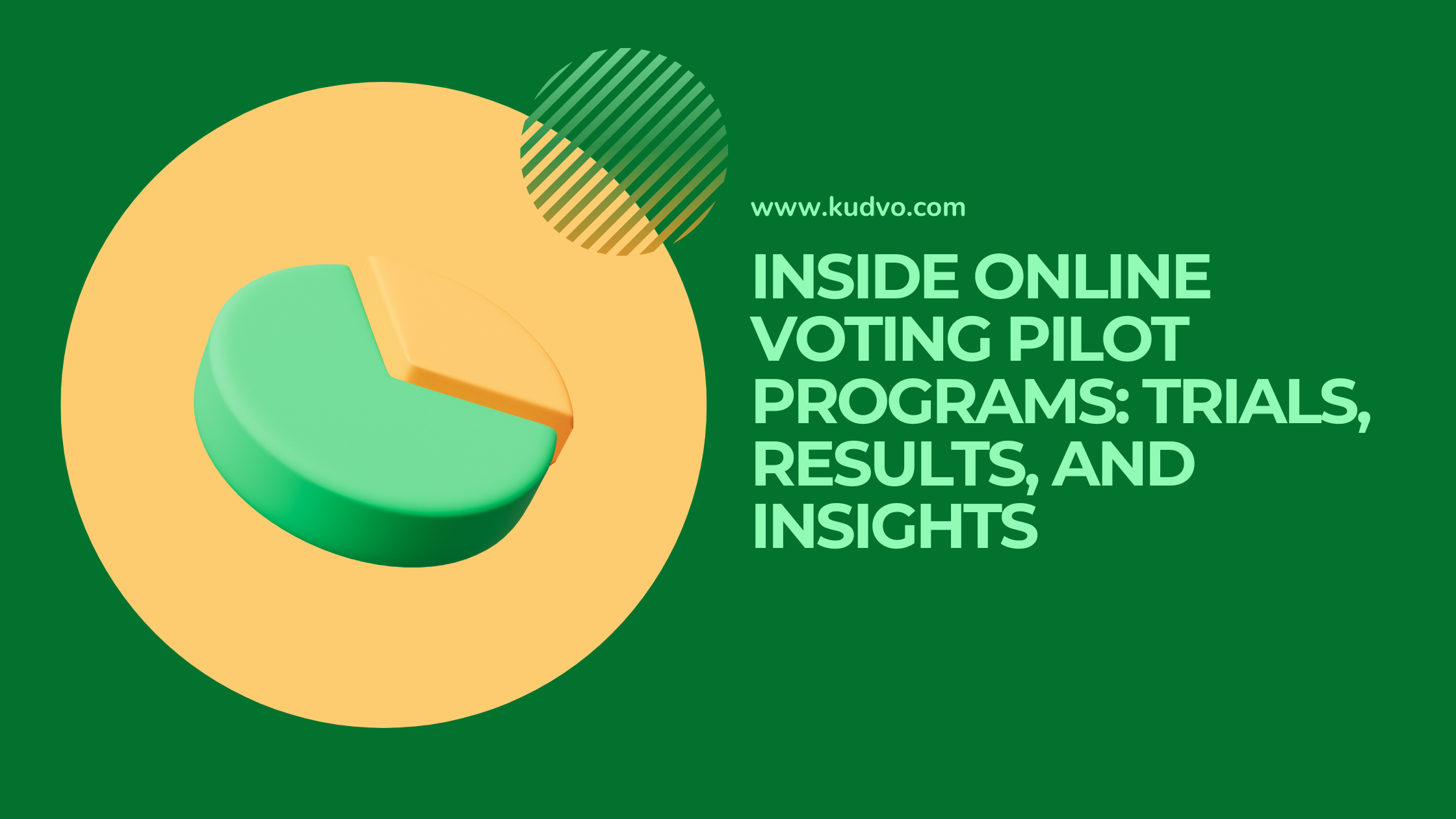Inside Online Voting Pilot Programs: Trials, Results, and Insights
Introduction
Can online voting really replace traditional ballots?
That’s the big question governments, schools, and organizations have been testing through pilot programs—small-scale, real-world trials designed to evaluate whether digital voting is secure, accessible, and effective.
From municipalities in Canada to universities in the U.S., online voting pilots are providing valuable data on how digital ballots perform in the wild. In this post, we’ll break down what these pilot programs look like, the results they’ve delivered, and the key insights organizations can use to plan their own digital voting systems.
Whether you’re part of a nonprofit, local government, or company, these lessons can guide your next steps toward smarter, more inclusive decision-making.
(Shoutout to Kudvo, a trusted platform helping organizations run secure and accessible online votes.)
1. What Are Online Voting Pilot Programs?
Pilot programs are essentially test runs for new technologies. They let stakeholders evaluate online voting systems in a controlled setting before full adoption.
Key characteristics of a pilot:
Limited to a specific group (e.g., students, residents of a town).
Run for a set time period or event (e.g., school board elections).
Carefully monitored and audited for security and usability.
Often paired with surveys to gather voter feedback.
Purpose:
Assess technical reliability and voter accessibility.
Identify potential risks or barriers.
Measure voter turnout compared to traditional methods.
2. Real-World Examples and Outcomes
Let’s look at some standout online voting pilot programs from around the world.
Estonia (Global Leader)
Scope: National elections since 2005.
Tech: Digital ID authentication, end-to-end encryption.
Results: Over 40% of voters cast ballots online in recent elections.
Insights: Estonia proves long-term digital voting can work—with the right infrastructure and trust-building.
Ontario, Canada (Municipal Elections)
Scope: Dozens of towns tested online voting in municipal elections.
Tech: Web-based platforms with two-factor authentication.
Results: Turnout increased by 20–30% in some regions.
Challenges: Tech issues on election day (e.g., slow load times) raised concerns about scalability.
Utah County, USA (Mobile Voting for Overseas Citizens)
Scope: Deployed blockchain-based voting for overseas military personnel in 2019.
Tech: Mobile app with biometric ID and blockchain verification.
Results: High satisfaction among users, but experts raised concerns about potential vulnerabilities.
Takeaway: A promising option for niche populations, but not yet ready for wide-scale use.
3. Key Insights from Online Voting Trials
Across pilot programs, some consistent themes emerge:
What Works:
Increased access: Especially helpful for remote voters, people with disabilities, or those traveling.
Convenience: Voting from a phone or laptop boosts participation, especially among younger voters.
Transparency tools: Voters trust platforms more when results can be independently verified.
What Needs Work:
Digital divide: Some groups still lack access to the internet or digital literacy.
Security concerns: Fear of hacking or vote tampering remains a key barrier.
User errors: Pilots reveal the need for clear, user-friendly interfaces and voting instructions.
Tips for a Successful Pilot:
Start small—try it with a single department or election.
Combine online voting with other voting methods (hybrid model).
Offer tech support during the voting window.
Collect and analyze feedback afterward to improve future rounds.
4. The Future of Online Voting Starts with Testing
Pilot programs are the bridge between theory and adoption. They allow organizations to test assumptions, fine-tune technology, and build trust over time.
By starting with smaller-scale trials and focusing on transparency, many institutions are finding that online voting not only works—it outperforms traditional methods in speed, accessibility, and convenience.
If your organization is considering a shift to digital voting, start with a pilot. Platforms like Kudvo offer customizable, secure tools to help you roll out your own test program, gather feedback, and build a roadmap toward full implementation.
Conclusion
Online voting pilot programs are more than experiments—they’re critical learning opportunities.
To recap:
Pilots allow safe testing of new voting systems.
Real-world examples show strong participation and positive feedback.
Key challenges include security, accessibility, and user education.
Starting with a pilot helps organizations build confidence and optimize tech.
Want to explore how your organization could launch its own secure and inclusive online vote? Head over to www.kudvo.com to learn more and get started today.
